An architect’s 20th century San Francisco house puts innovative green building practices to the test.
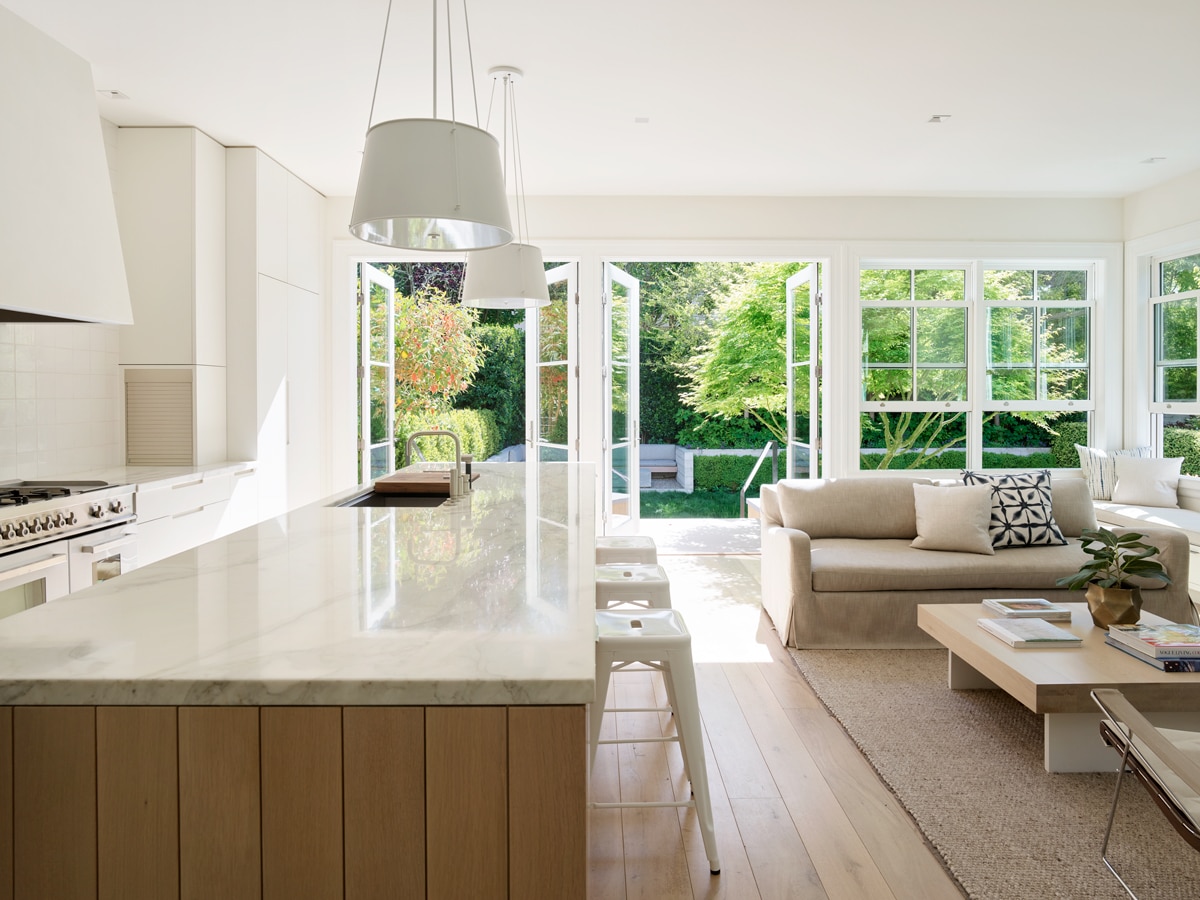
Photo by Matthew Millman
It’s not always easy to transform a turn-of-the-century home, let alone aim for net zero. Feldman Architecture always encourages its clients toward sustainable design, so incorporating cutting edge green building practices was nothing new in this case, and the client made the process even easier—it was architect Jonathan Feldman and his wife Lisa Lougee themselves.
Feldman approached the remodel of their 1905 house as a laboratory, constantly asking himself and his team, “How can the home be at the leading edge of sustainability?” “I was excited to not only create a contemporary, modern, and functional home for my family within the building constraints of urban San Francisco, but also to innovate and experiment with cutting edge sustainability best practices,” he says. “The house is a New England brick and shingle style residence sitting next to an overgrown lot, which we transformed into an open, airy, flowing home. We wanted a space that both respected the traditional character of an Edwardian building, while integrating modern architectural and sustainability features that I use in my work with my firm and my clients.”
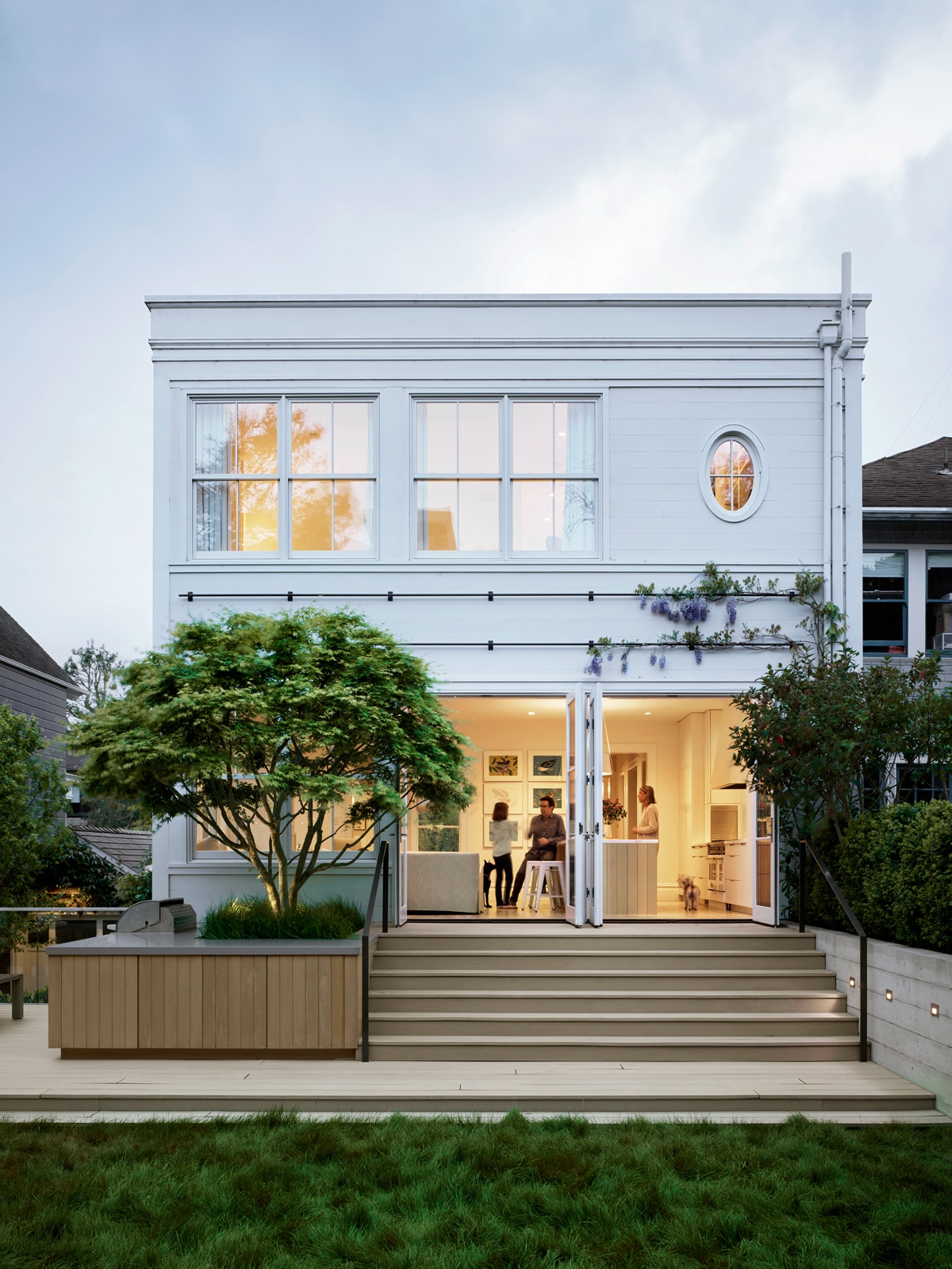
Photo by Matthew Millman
The design pushed the boundaries of San Francisco residential sustainability and design, and the team jumped at the chance to beta test innovative greywater systems and energy monitoring technology not previously attempted in the city. “We installed water and energy monitoring devices and software to tell us how much water and electricity the building was harvesting, recycling, and consuming. Living in this house is a great opportunity to see firsthand how the systems perform in the real world,” Feldman says. “In my design practice, we use the research and data gathered from this project to improve and better implement these strategies in the buildings we design for our clients. But living in this house tells me so much more than looking at clients’ utility bills.”
Of all of the impressive features, Feldman says he loves the rain and greywater collection systems best. “It means that even in our ever-increasingly common droughts, I can feel good looking out at a lush garden, knowing that it has been irrigated with second-use water. And I don’t feel quite as bad when I treat myself to a long shower.”
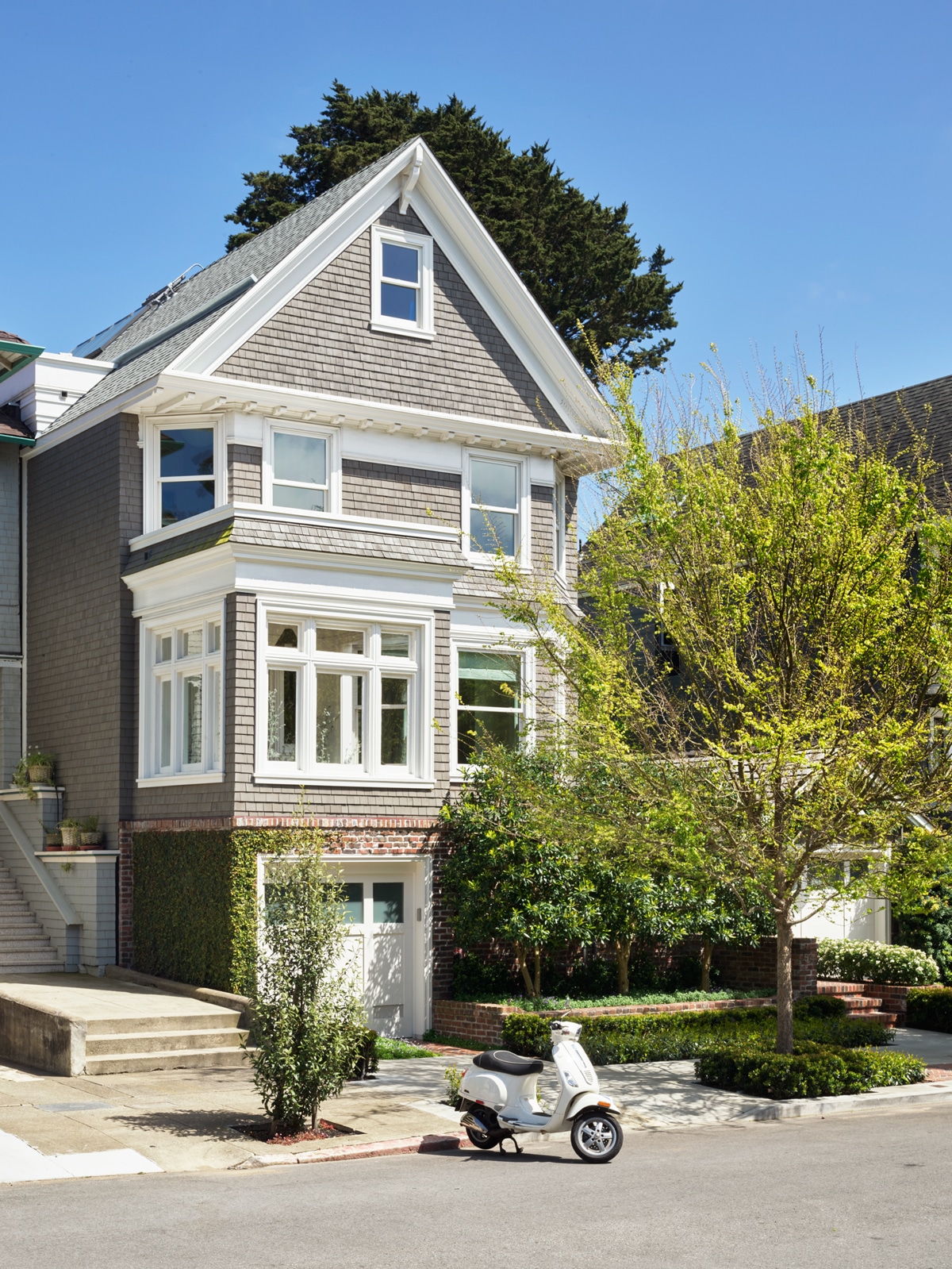
Photo by Matthew Millman
The 4,630-square-foot home sits next to an overgrown field and has the tongue-in-cheek name The Farm due to the rarity of backyards and outdoor living spaces in the city. The house achieved LEED Platinum and has radiant heat partially heated by solar water panels, an HRV system, and sustainably sourced, non-toxic materials in addition to the impressive rainwater and greywater harvesting systems, with tanks concealed below the rear deck.
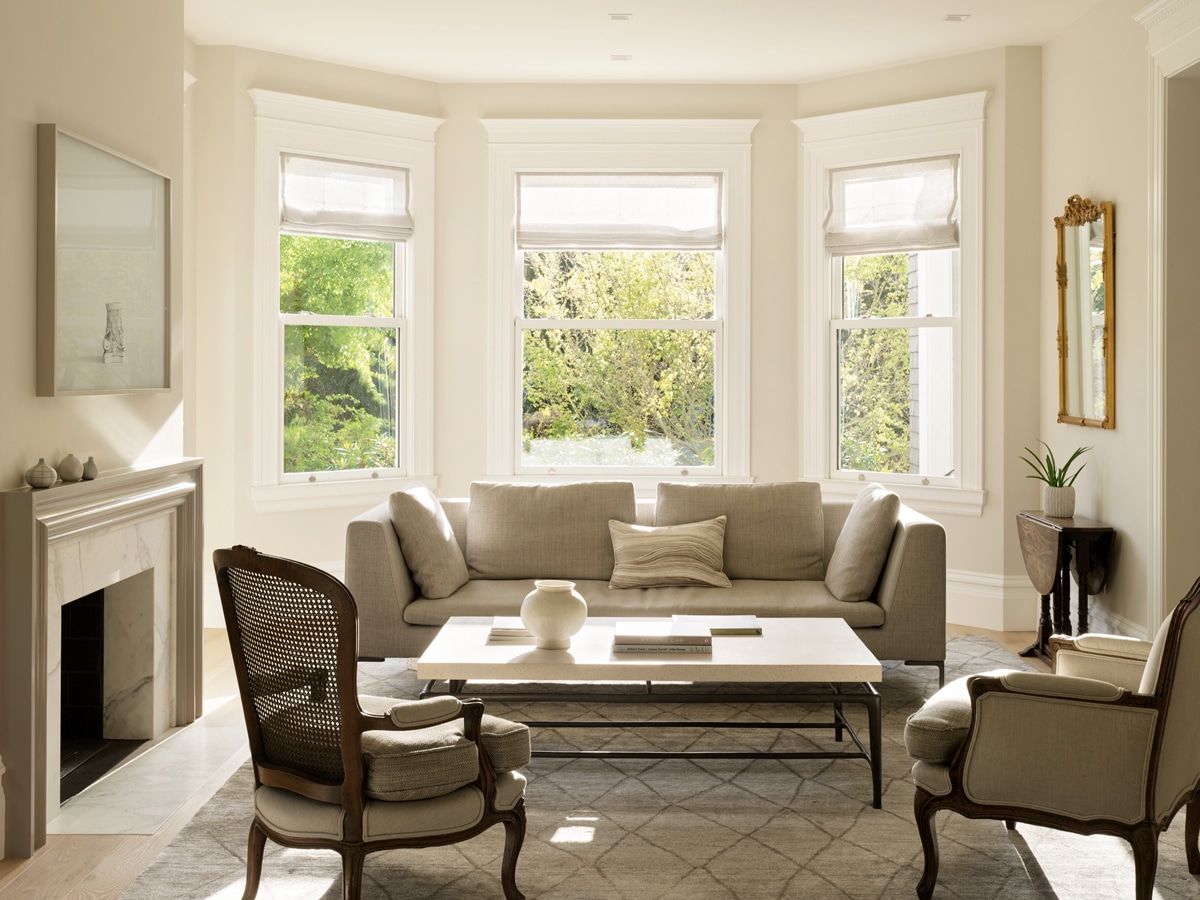
Photo by Matthew Millman
The home’s original, poorly laid out spaces were a challenge, and the systems were primitive—including nob-and-tube wiring, old plumbing, and no insulation. “Without altering the historic facades, we needed to completely rebuild from the inside,” Feldman says. “We shored-up the house and dug in new foundations below. We opened all the walls, floors, and roofs to weave in new structure and new systems. We added high-performance windows, batt and foam insulation, liquid-applied waterproofing, and a rainscreen façade.”
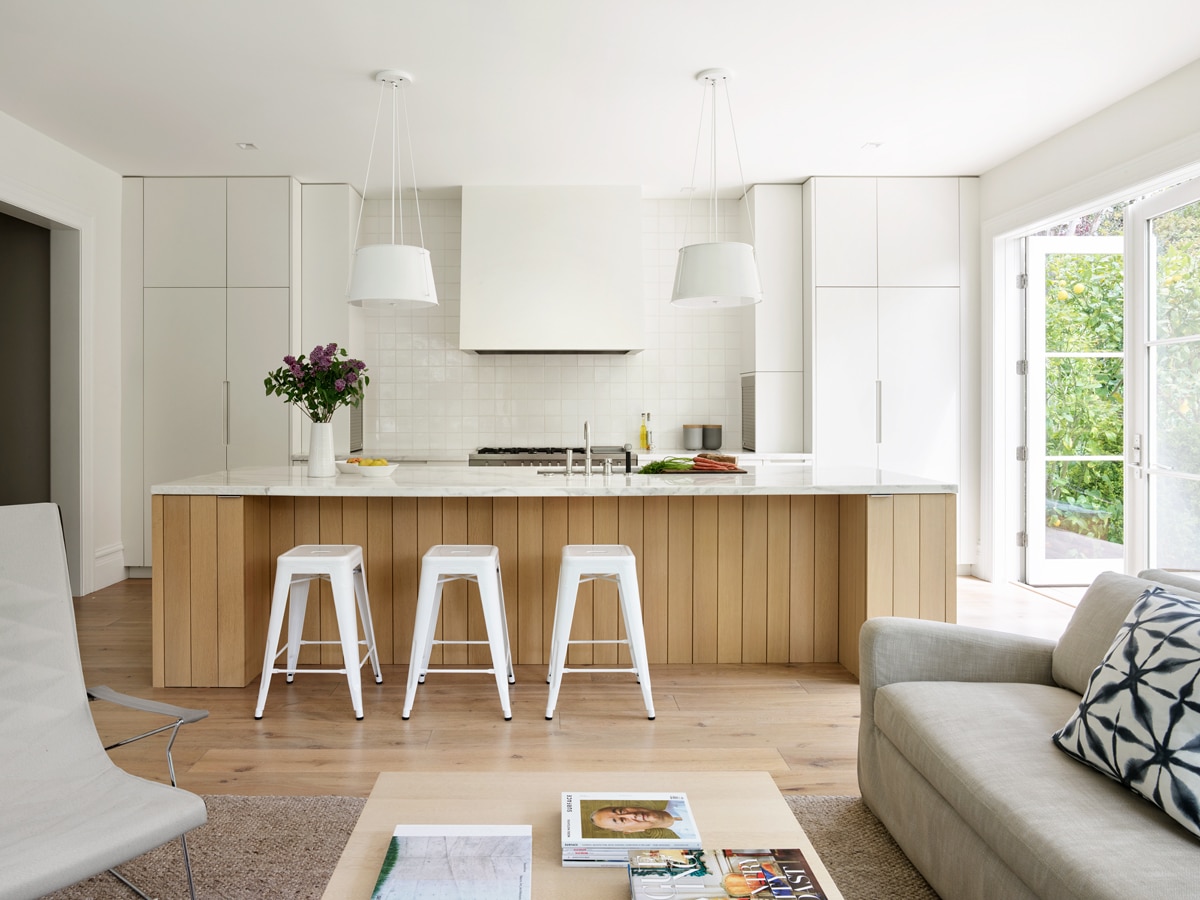
Photo by Matthew Millman
The original house had no way of accessing the side or rear yards. New back doors, combined with the deck that bridges across the sloping lot to connect to the rear lawn, create a strong indoor-outdoor connection and bring light and garden views to the interior rooms.
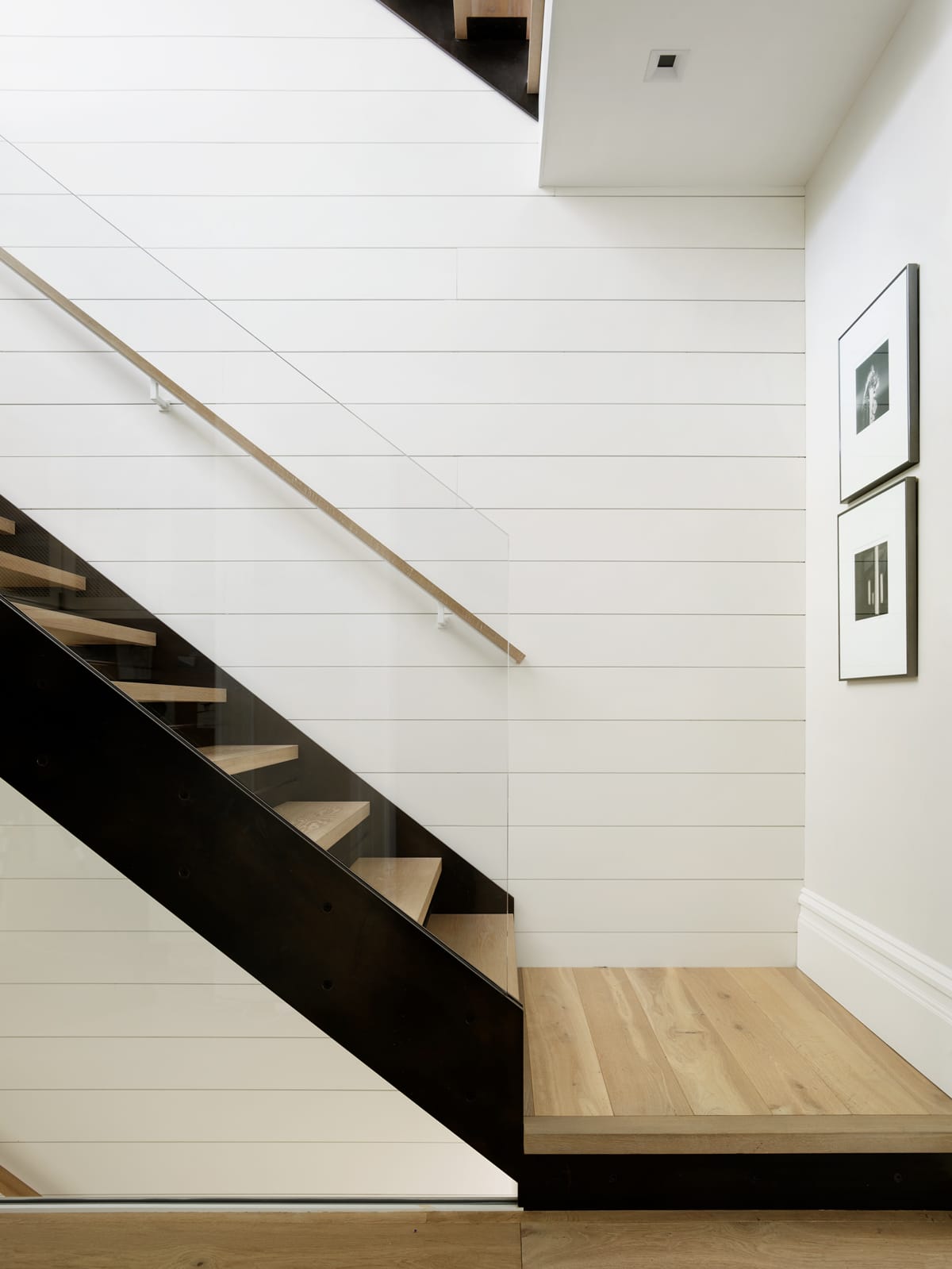
Photo by Matthew Millman
The staircase connects four stories and acts as a lightwell to funnel daylight into what would have otherwise been the dark core of the narrow house. At the top, the team placed four large skylights and opposing dormer windows to pour light down the core. Clear glass rails and float- ing stair treads maximize how much light penetrates down to the lower floors.

Photo by Matthew Millman
Feldman utilized “found space” in what used to be a closed, unused attic to make a loft. “We wanted to carve away some of it as a way to bring light and volume to the floor below, as well as providing a flexible space away from the rest of the house where one can find a quiet couch to read a book, play guitar, or do some focused homework.”
Ground floor plan
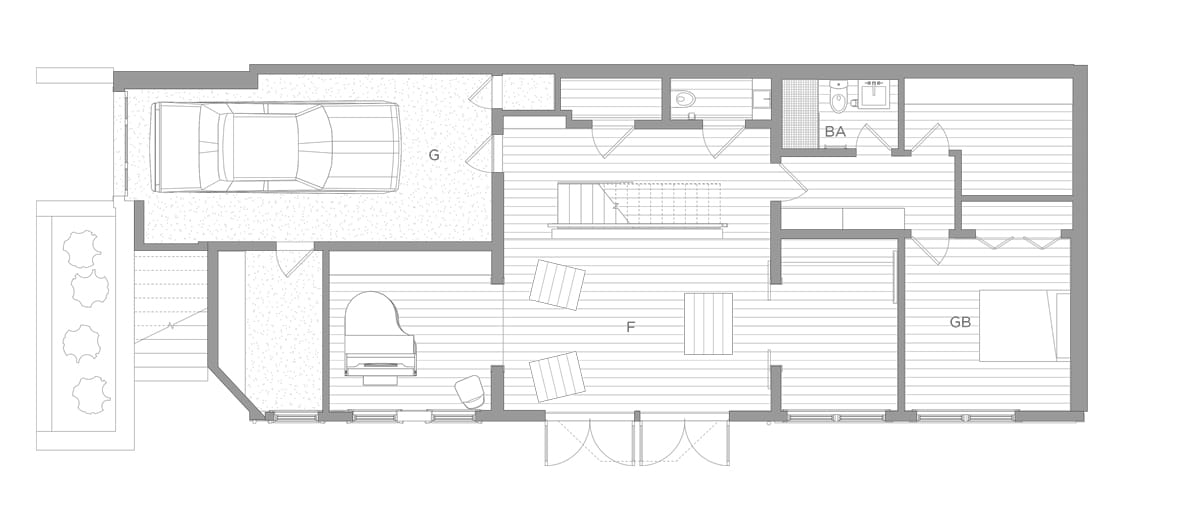
Drawing courtesy of Feldman Architecture
Second floor plan
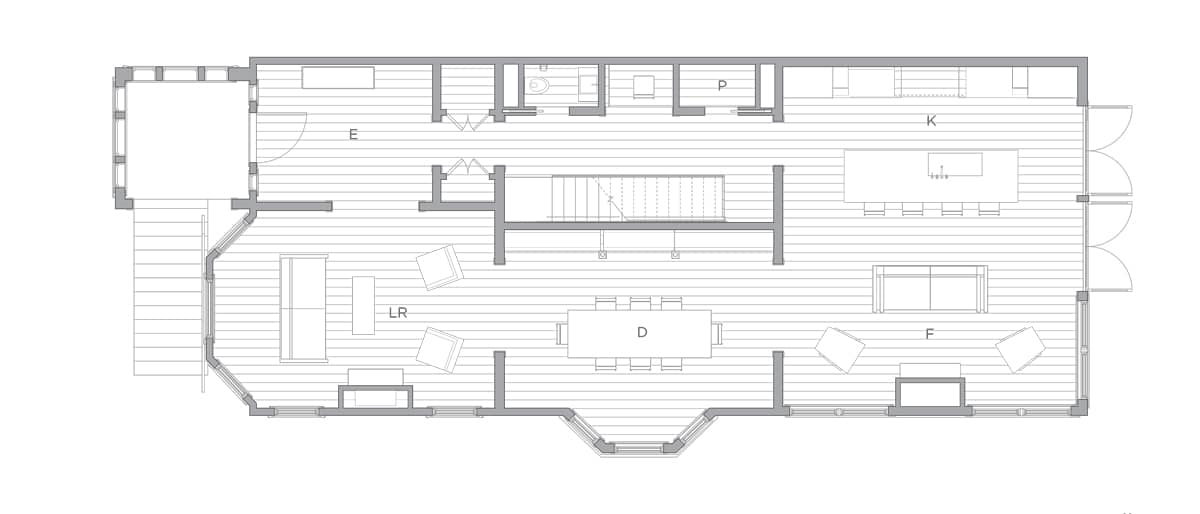
Drawing courtesy of Feldman Architecture
Project: The Farm Location: San Francisco, CA Completion: 2018 Architect: Feldman Architecture Contractor: Jeff King & Company Structural Engineer: Strandberg Engineering Mechanical Engineer: Monterey Energy Group Interior Design: Lisa Lougee Interiors Landscape Architect: Ground Studio Landscape Architecture Windows: Jeld-Wen Kitchen Cabinets: Mueller Nicholls Additional Cabinetry: Mark Brady Flooring: Galleher ERV: Zehnder Home Automation: Savant
